Welcome, fellow dinosaur enthusiast! Today, I am thrilled to dive deep into the fascinating world of prehistoric creatures.
Together, we will embark on a captivating journey to explore the wonders of Montana’s very own state fossil – the Duck-Billed Dinosaur.
In this article, you will not only learn about this cretaceous dinosaur’s unique characteristics but also gain insights into its extraordinary parental care and astonishing fossil discoveries.
Rest assured, my expertise in the field and extensive research have equipped me with the insights to guide you through this exciting journey.
- Related article: Montana’s Official Symbols
Whether you are a curious student, a passionate paleontologist, or simply someone fascinated by dinosaurs, this article is tailored just for you.
So, buckle up and prepare to be transported back in time.
Montana State Fossil
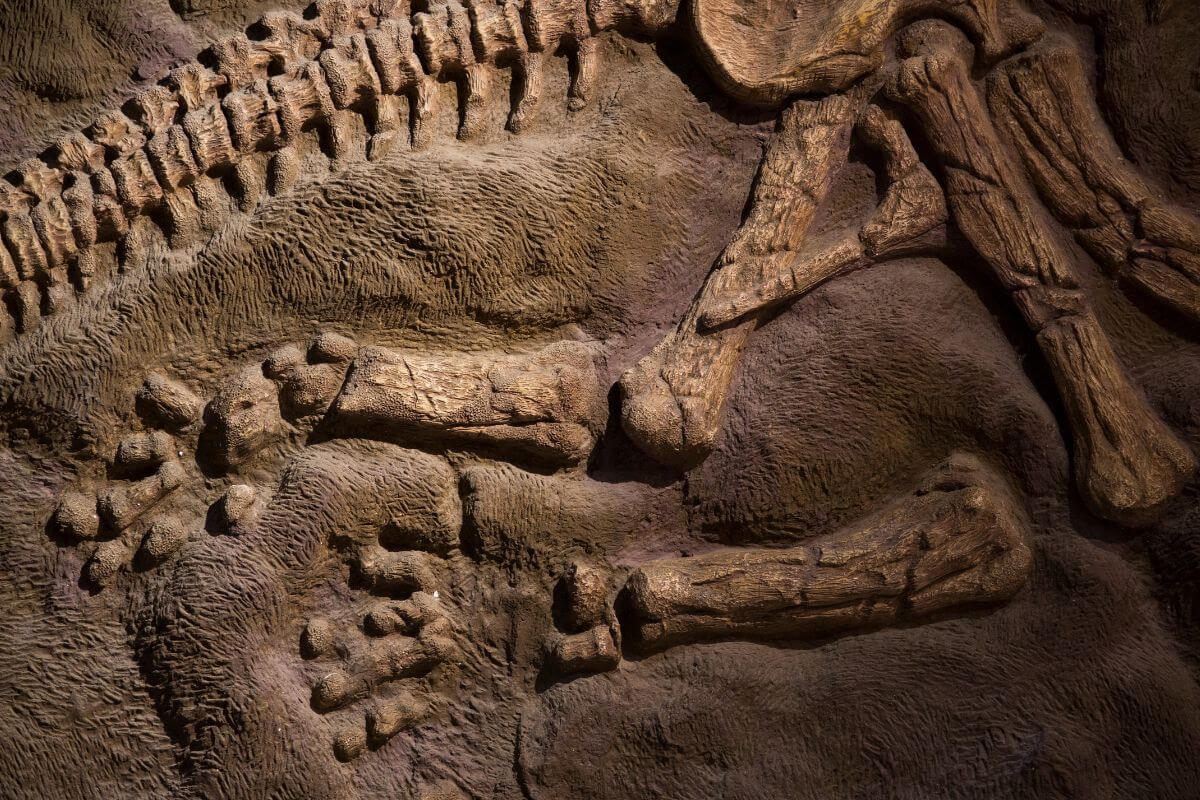
Welcome to this enthralling exploration of the Big Sky Country’s official state fossil, the Duck-Billed Dinosaur, scientifically known as Maiasaura peeblesorum.
Montana’s choice to honor the Duck-Billed Dinosaur as its state fossil is no coincidence. This remarkable species holds a special place in the hearts of Montanans and paleontologists alike.
Its significance lies not only in its unique physical attributes but also in its extraordinary social behavior and exceptional parental care.
This herbivorous dinosaur earned the moniker “duck-billed” due to its distinct beak-like structure, resembling that of a duck.
Its ability to care for its young with such dedication has earned it the endearing title of “Good Mother Lizard.”
It was through the efforts of Helen Peterson, her 6th-grade class, and Ben Veach, that Montana proudly adopted the Maiasaura peeblesorum as its official dinosaur in 1985.
Let’s tackle that in detail in the coming sections.
What Is a Duck-Billed Dinosaur?
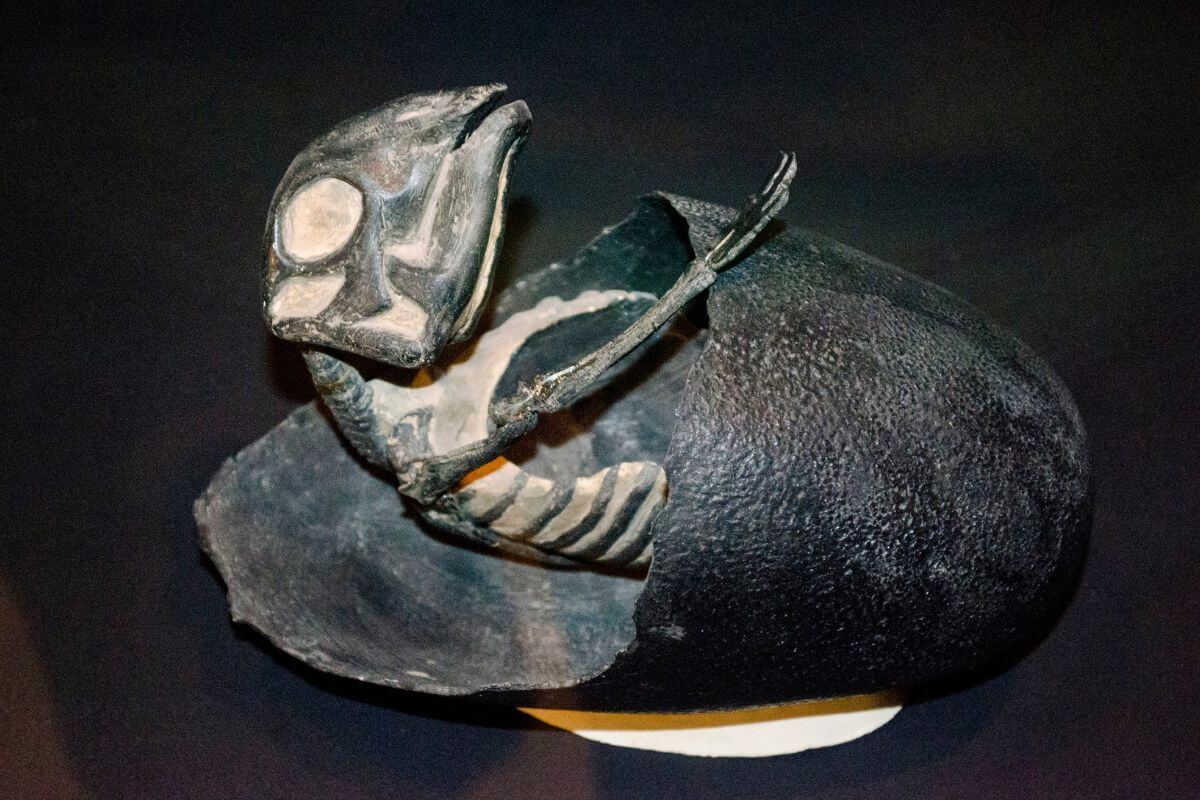
The majestic Duck-Billed Dinosaur, also known as the Maiasaura peeblesorum! These herbivorous creatures, belonging to the hadrosaurs family, roamed the land during the Upper Cretaceous Period.
Hadrosaurs are well-known for having a higher population concentration in North America compared to the rest of the world.
Among the most striking features of the Duck-Billed Dinosaur is its beak, which resembles that of a duck, earning it its charming name.
The discovery of the Maiasaura’s fossil took place on the famed “Egg Mountain,” thanks to the brilliant mind of Jack Horner, the Curator of Paleontology at the Museum of the Rockies in Bozeman.
At Egg Mountain, these extraordinary dinosaurs created extensive nesting colonies. Picture this: nests about 6 feet in diameter with up to 20 eggs nestled within. Impressive, right?
The nests themselves are about 7 feet wide and 2 and ½ feet deep, shaped like perfect little bowls.
It’s as if these diligent mothers knew exactly how to create the ideal environment for their eggs. Truly a testament to their nurturing abilities.
The name “peeblesorum” pays homage to the Peebles, a remarkable Montana ranch family hailing from the Choteau area, where these important dinosaur discoveries were made. Egg Mountain is located just south of the town of Choteau.
The Maiasaura earned their reputation as devoted parents, tirelessly caring for their young. They grew rapidly, which suggests they may have been warm-blooded creatures.
The Duck-Billed Dinosaur is also known for its set of 150 powerful teeth. This tool seem to be perfectly suited for the task at hand: chewing plants.
With such a robust dental apparatus, the Maiasaura could effortlessly devour the vegetation around them.
As adults, these giant dinosaurs could stretch up to 25 feet in length, truly a sight to behold.
The Duck-Billed Dinosaur, with its herbivorous nature and remarkable physical attributes, stands as a fascinating marvel of the Cretaceous era.
Montana State Fossil Origins
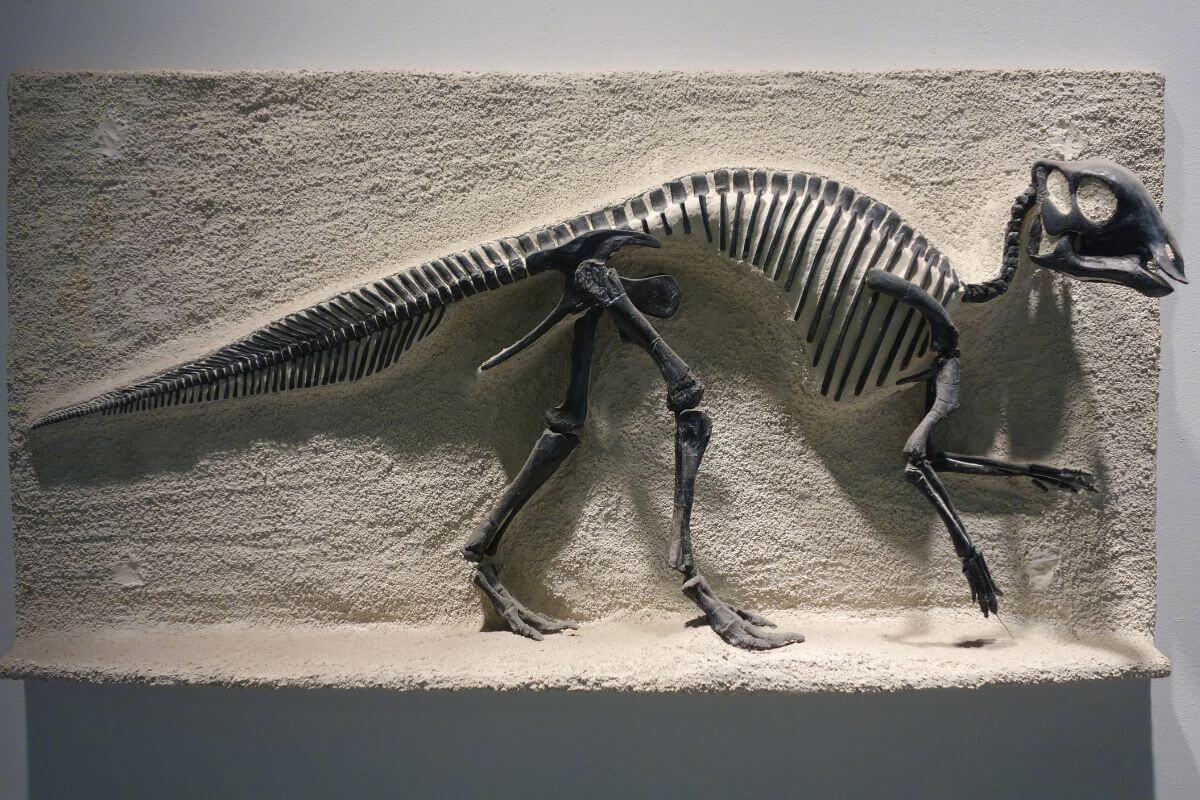
On February 22, 1985, Governor Ted Schwinden bestowed upon Montana a unique and prestigious honor—the designation of an official state fossil.
And thus, the magnificent Maiasaura peeblesorum, with its fascinating history, was enshrined in the heart of Montana’s fossil record.
This momentous recognition is all thanks to Ben Veach, former president of the Montana State Council of Rocks and Minerals, and Helen Peterson along with her 6th-grade students at Livingston Middle School.
Together, they championed the cause, tirelessly promoting the state fossil. But the tale doesn’t end there.
A remarkable trio of paleontologists in the form of Jack Horner, Bob Makela, and Marion Brandvold played pivotal roles in the exploration and naming of the Maiasaura peeblesorum.
Their groundbreaking discoveries unearthed a wealth of knowledge about Montana’s ancient past, allowing us to peer into the lives of these long-extinct beings.
Duck-Billed Dinosaur Fun Facts
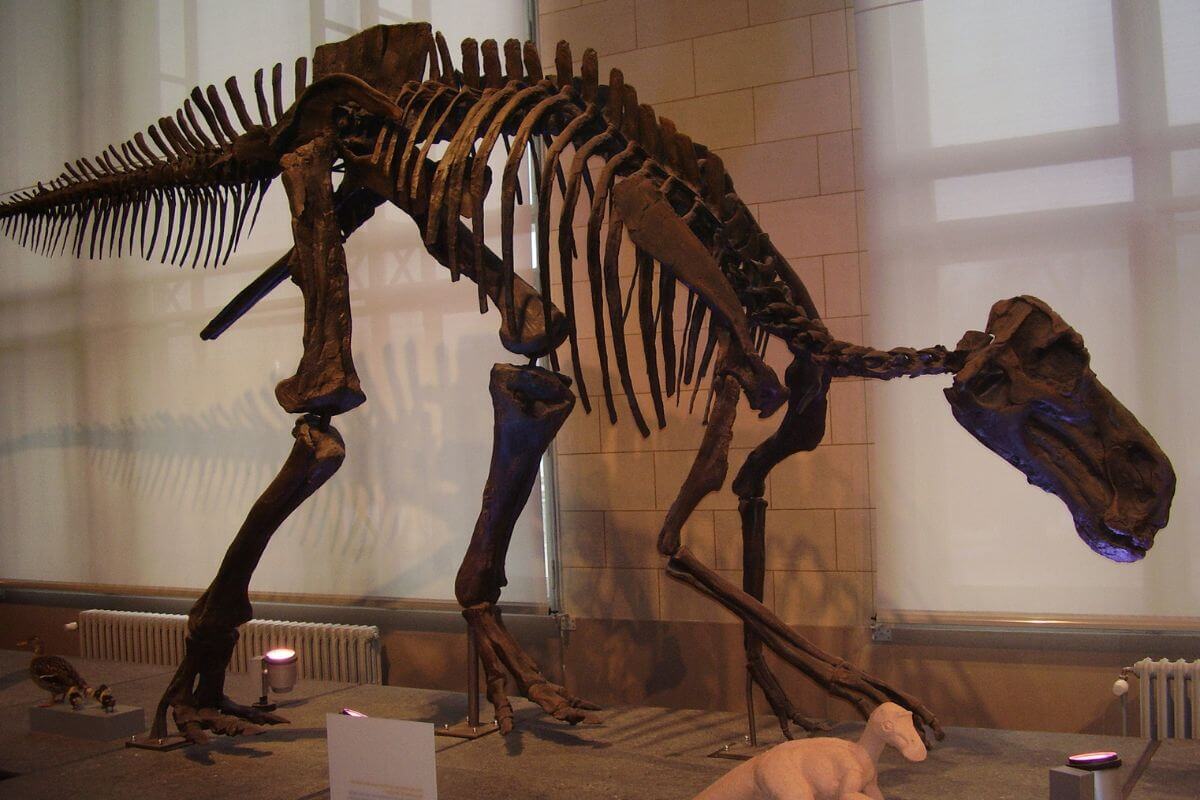
Known as the “Good Mother Lizard,” the Maiasaura earned this title through its exhibition of complex parental care behaviors.
Imagine a world where dinosaurs cared for their young in a manner similar to modern-day birds. This is precisely the case with the Maiasaura.
Fossil evidence suggests that the Duck-Billed Dinosaur formed nesting colonies and took care of their hatchlings with tender affection.
This exceptional level of parental care in dinosaurs is a testament to the ancient sensitivity and wisdom of these herbivorous dinosaurs, providing a glimpse into their communal lives.
What truly sets the Maiasaura apart, however, is their unusual teeth.
Unlike other dinosaurs, who typically had a single row of teeth, the Maiasaura possessed an unusual dental mechanism. Each functioning tooth had 4-5 growing teeth ready to replace it if needed.
This unique adaptation ensured that their dental arsenal remained intact, ready to chew on the abundant vegetation that surrounded them.
The Maiasaura’s story is a living testament to the wonders of Montana’s prehistoric past.
From their display of parental care to their intriguing dental structure, these herbivorous dinosaurs continue to captivate our imaginations and teach us valuable lessons about the intricacies of ancient life.
You can learn more about this fascinating creature by visiting the Museum of the Rockies which is part of Montana State University in Bozeman.
Montana State Fossil Final Thoughts
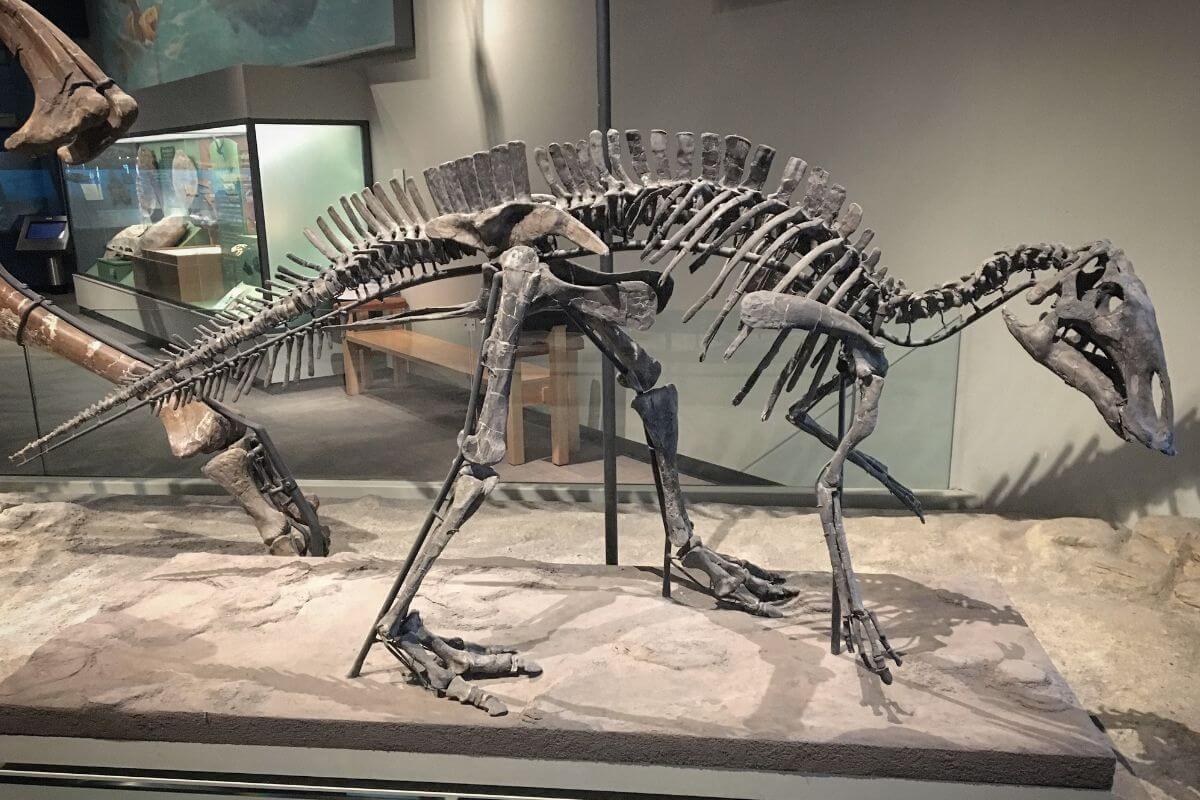
Montana is not only known for its stunning landscapes and abundant wildlife but also for its remarkable paleontological discoveries. One such discovery is the Maiasaura, its official state fossil.
The Maiasaura, scientifically known as Maiasaura peeblesorum, holds a significant place in the world of dinosaur fossils.
Not only does it provide us with invaluable insights into the lives of ancient creatures, but it also showcases a level of parental care and communal living that is truly remarkable.
Imagine, dinosaurs caring for their young in a manner similar to modern-day birds, forming nesting colonies, and tending to their hatchlings with tender affection.
This extraordinary behavior, along with their unique dental mechanism of multiple rows of teeth, sets the Maiasaura apart from other dinosaur species.
Montana, with its rich fossil deposits, is undoubtedly a treasure trove for paleontologists and dinosaur enthusiasts alike.
The state’s wealth of discoveries, including the Maiasaura, has played a pivotal role in expanding our knowledge of dinosaur biology and evolution.
It is a testament to the ancient wisdom of these giant herbivorous dinosaurs and their fascinating communal lives.
Speaking of nesting and birdlike features, there’s also a bird representing Montana, which, like the state fossil, holds significant symbolic importance in the state. I recommend learning about both of these unique symbols.
Montana State Fossil FAQs
1. Does Montana Have Fossils?
Montana has an especially good fossil record of ceratopsid dinosaurs. From the mighty duck-billed dinosaur to the majestic horned dinosaur, this breathtaking landscape holds clues to a bygone era.
Both Maiasaura and Troodon are known to have formed nesting colonies in the area. Paleontologists have discovered 75 different species of dinosaurs in Montana, more than any other state in America.
2. How Old Is the Montana Fossil?
The oldest dinosaur fossils in Montana are found in rocks of the Jurassic Period, which are 155 million years old. They include the gigantic Diplodocus, the plated Stegosaurus, and the fearsome Allosaurus. Most Montana dinosaurs come from Cretaceous Period rocks.
About 80-75 million years ago, nesting dinosaurs like Maiasaura and Troodon lived in the coastal plains next to the inland sea.
3. What Type of Fossils Are Found in Montana?
Dinosaur fossils found in Montana include:
- Diplodocus
- Stegosaurus
- Allosaurus
- Deinonychus
- Oryctodromeus
- Maiasaura
- Troodon
- Tyrannosaurus rex
- Triceratops
- Ankylosaurus
4. How Is a State Fossil Chosen?
The selection criteria for a state fossil are as diverse as the fossils themselves. To summarize it for you, here are the main considerations in choosing a state fossil:
- Significance to the state’s geological history and cultural heritage
- Discovery in the region or surrounding areas
- Scientific importance and potential for educational value
- Symbol of pride and wonder, captivating both young and old with its story of the past
- Appeal to the public
5. What Dinosaurs Lived in Montana?
Being the fossil haven that it is, Montana has been home to a wide variety of dinosaurs throughout history. Here is a list of some dinosaurs that lived in Montana:
- Edmontosaurus
- Pachycephalosaurus
- Triceratops
- Tyrannosaurus Rex
- Maiasaura
Uncover additional details about the majestic place that is Montana by reading these other great articles:
- What’s Montana’s State Flower
- Montana’s Fish Symbol
- Montana’s Emblematic Fruit
- Montana’s Symbolic Grass
- https://serc.carleton.edu/research_education/mt_geoheritage/sites/augusta_choteau/paleontology.html
- https://leg.mt.gov/bills/mca/title_0010/chapter_0010/part_0050/section_0090/0010-0010-0050-0090.html
- https://www.nps.gov/articles/mesozoic-egg-mountain-dawson-2014.htm
- https://www.mdt.mt.gov/travinfo/docs/roadsigns/DinosaurCountry.pdf
- https://ucmp.berkeley.edu/taxa/verts/dinosauria/index.php
- https://commons.wikimedia.org/wiki/File:Embryonic_Maiasaura_emerges_from_egg_-reconstructed_cast–Museum_of_the_Rockies-_2013-07-08.jpg
- https://commons.wikimedia.org/wiki/File:Maiasaura_peeblesorum_cast_-University_of_California_Museum_of_Paleontology–Berkeley,_CA-_DSC04688.JPG
- https://commons.wikimedia.org/wiki/File:Maiasaura_skeleton.jpg
- https://commons.wikimedia.org/wiki/File:FMNH_Maiasaura_fossil_skeleton.jpg

